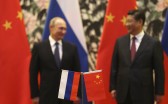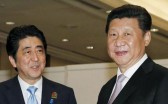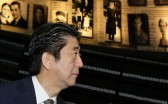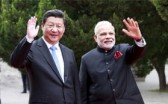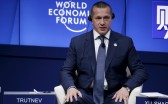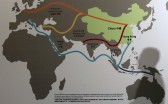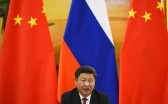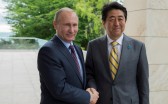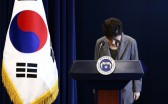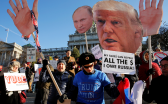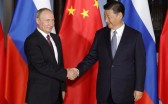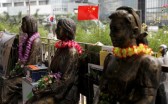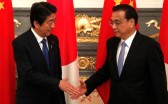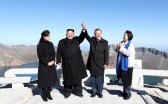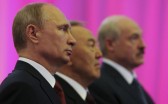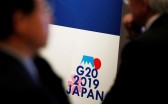In March 2015, Premier Li Keqiang gave a press conference following the conclusion of the annual National People’s Congress, in which he explained that China’s relationship with Japan had reached an important crossroads. In a year in which the two countries were about to commemorate the seventieth anniversary of the end of WWII, Li presented what appeared to be an ultimatum to the Abe government: If it could take the “correct” view of history and acknowledge squarely Japanese atrocities during WWII, this would improve the bilateral relationship and create opportunities for increased trade. Left unsaid was the impact of failing to take the “correct” view.
Li’s ultimatum is a widely shared, but ultimately problematic, Chinese view. The view that Japan must do most of the heavy lifting on the history problem is held across the spectrum of Chinese officialdom. It represents the view of a party that has, since the late 1980s, painted itself into a very particular way of remembering the history of what is known in China as the 1937-1945 War of Resistance against Japan. In the late 1980s and 1990s, the Chinese Communist Party (CCP) began to “re-remember” the history of China’s defeat of Japanese wartime aggression as a way of bolstering its domestic legitimacy. This was a response to domestic and global disruptions to the Party’s legitimacy caused by events such as the Tiananmen Square massacre, growing socio-economic divisions in Deng Xiaoping’s China, and the collapse of the Soviet Union. Chinese school children began to learn about the history of Japanese aggression in China, museums were created to remember atrocities such as the 1937 Nanjing Massacre and the 1931 Manchurian Incident, and television dramas and online war games told the story of Japan’s invasion of China. Portraying Japan through this kind of historical lens became a centerpiece in reconstructing China’s national identity, glorifying the role of the CCP and downplaying how Japan had been transformed after the war.
Before the late 1980s and 1990s, the CCP “remembered” the history of WWII in a very different way, long playing down the history of Japanese aggression in China. Newspaper articles referred to Japanese as fellow victims of imperialism, the CCP handed out relatively lenient sentences to Japanese war criminals, and leaders such as Mao Zedong and Zhou Enlai viewed the war as an important catalyst in weakening the Guomindang and bringing the CCP to power. This benign view of Japan and the two countries’ wartime history was a way to avoid having to acknowledge the leading role played by the Guomindang, to draw Japan away from the US-led order in Asia, and to establish a mutually beneficial—though limited—economic relationship with Japan that would allow the CCP to access Japanese industrial goods and technology.
Unsurprisingly, this changing narrative complicated China’s relationship with Japan. During the Mao era, Japanese were surprised, but relieved, to discover that the CCP seemingly bore few grudges and was eager to rebuild relations with Japan. Yet the Cold War order, and Japan’s alliance with the United States, prevented the two sides from achieving any meaningful reconciliation. By the 1990s, at a time when the two countries were growing increasingly economically intertwined, Japanese were again caught off guard by the uncompromising tenor of the “re-remembering” of Japanese atrocities. Complicating matters was the fact that, in the same decade in which the CCP was “re-remembering,” Japan also began reconsidering the narrative and legacy of this history. As Tessa Morris-Suzuki explains, at the time of the fiftieth anniversary of the end of WWII—in 1995—the Japanese political class grew increasingly conflicted over how to remember the history of the war and, just as importantly, Japan’s future role in Asia. The result was, in 1995, the issuing of both a personal statement by Prime Minister Murayama that expressed his “deep remorse” and “heartfelt apology” for Japan’s wartime aggression, and a watered down Diet resolution that failed to acknowledge or apologize for wartime aggression in Asia.
Twenty years on, how have these conflicting historical narratives affected the China-Japan relationship? In August and September 2015, China and Japan commemorated the seventieth anniversary of the end of WWII with major speeches and, in China’s case, a military parade. Confounding expectations, the commemorative activities managed to avoid causing greater friction in the bilateral relationship. In his August 14 statement, Prime Minister Abe sought to balance between Chinese demands that Japan “correctly” view history and his own desire to get out from under the postwar burden that makes Japan “predestined to apologize.” Though the Chinese Foreign Ministry criticized aspects of Abe’s statement, China’s response was notably restrained. On September 3, the CCP then held its own commemoration with a military parade that emphasized China’s defeat of Japanese aggression. Although there had been a steady diet of newspaper articles and television dramas detailing the history of the war in the weeks and months leading up to the parade, it is significant that the September 3 events did not dwell in detail on Japanese wartime atrocities.
That China and Japan’s commemorative activities managed to avoid further harming the relationship is thanks to some serious shuttle diplomacy. Since January 2015, senior Japanese officials such as Foreign Minister Kishida Fumio and Abe’s security adviser Yachi Shotaro, have met with Li Keqiang and other senior Chinese leaders to begin repairing the diplomatic, parliamentary, military, business, and people-to-people ties that were badly disrupted in 2012-2013. This shuttle diplomacy has been critically important in resuming bilateral security talks, reinvigorating trilateral political and economic cooperation with South Korea, and negotiating the creation of a maritime crisis mechanism. At the same time, it helped to prepare the ground for the language and symbols that would be used by the Xi and Abe governments in their commemoration activities, ensuring that they did not spark a further crisis.
In spite of these achievements, shuttle diplomacy has failed to deal with a much more fundamental problem in the relationship: the two sides do not share a mutually acceptable vision of Asia’s future strategic order. Indeed, their clashing visions were made abundantly clear in the way that each dealt with the seventieth anniversary. In China’s case, the military parade was an opportunity to display many of its newest and most advanced military capabilities. Much of this was intended to send a domestic message: at a time of major anti-corruption campaigns and significant reforms to the People’s Liberation Army (PLA), the parade signalled that Xi Jinping was firmly in control of his military and understood the importance of a strong military to China’s overall security. Yet the parade also sent a message to observers abroad of deterrence. As CCTV reporters and military analysts explained, China’s impressive display of military might was designed to deter those who might try to change the postwar order or what China sees as the status quo. Though the government argued that the military parade was not targeted at any one country, over the past two years the government has often used official statements, newspaper articles, and speeches to warn of Japan’s attempts to overturn the postwar order. For example, following the introduction of the Abe government’s new security bills, Xinhua explained that Japan was “putting peace and stability in East Asia as well as the international post-war order in jeopardy.” Though Abe’s new security bills are designed to allow Japan—in concert with allies and partners—to better resist China in regional security disputes, the unmistakable message again delivered on September 3 was that the militarization of Japan today has roots in its past aggression and requires China’s military build-up.
In Japan’s case, Asia’s postwar order was also a strong feature of Abe’s statement, which spoke of the way in which Japan had “devoted” itself to peace and prosperity since the end of the war, and of his generation’s responsibility to continue to build a peaceful order in Asia by supporting the principles of democracy, rule of law, non-use of force to settle disputes, and a free, fair and open international economic system. Like Xi Jinping, Abe refrained from targeting any particular country in his address, but his speech was a thinly veiled criticism of what Japan sees as China’s attempts to change the status quo. Implicit in Abe’s historical narrative is a contrast with China’s postwar record of hostility to all of the above values and the prospect that China is preparing to build a regional order that is not consistent with these values. If Abe’s message on the postwar era has been garbled due to his insistence on delivering a different message about the era to 1945, this should not obscure the fundamental clash between two historical narratives intended to shape thinking about the future.
Li Keqiang was right: the way in which WWII is remembered is the “root cause” of tensions in Sino-Japanese relations, but it is primarily how China “re-remembers” that era. Abe has muddled the picture, distracting attention from Xi’s twisted recollection of what is deservedly remembered as righteous resistance to Japan’s aggression. Yet, Abe has also made clear that the way the postwar era is remembered also matters for Sino-Japanese relations. Watching the seventieth anniversary commemorations this year makes it all too clear that China and Japan have yet to work out not only how to remember the low and high points of their past, but also how to peacefully co-exist in Asia.

